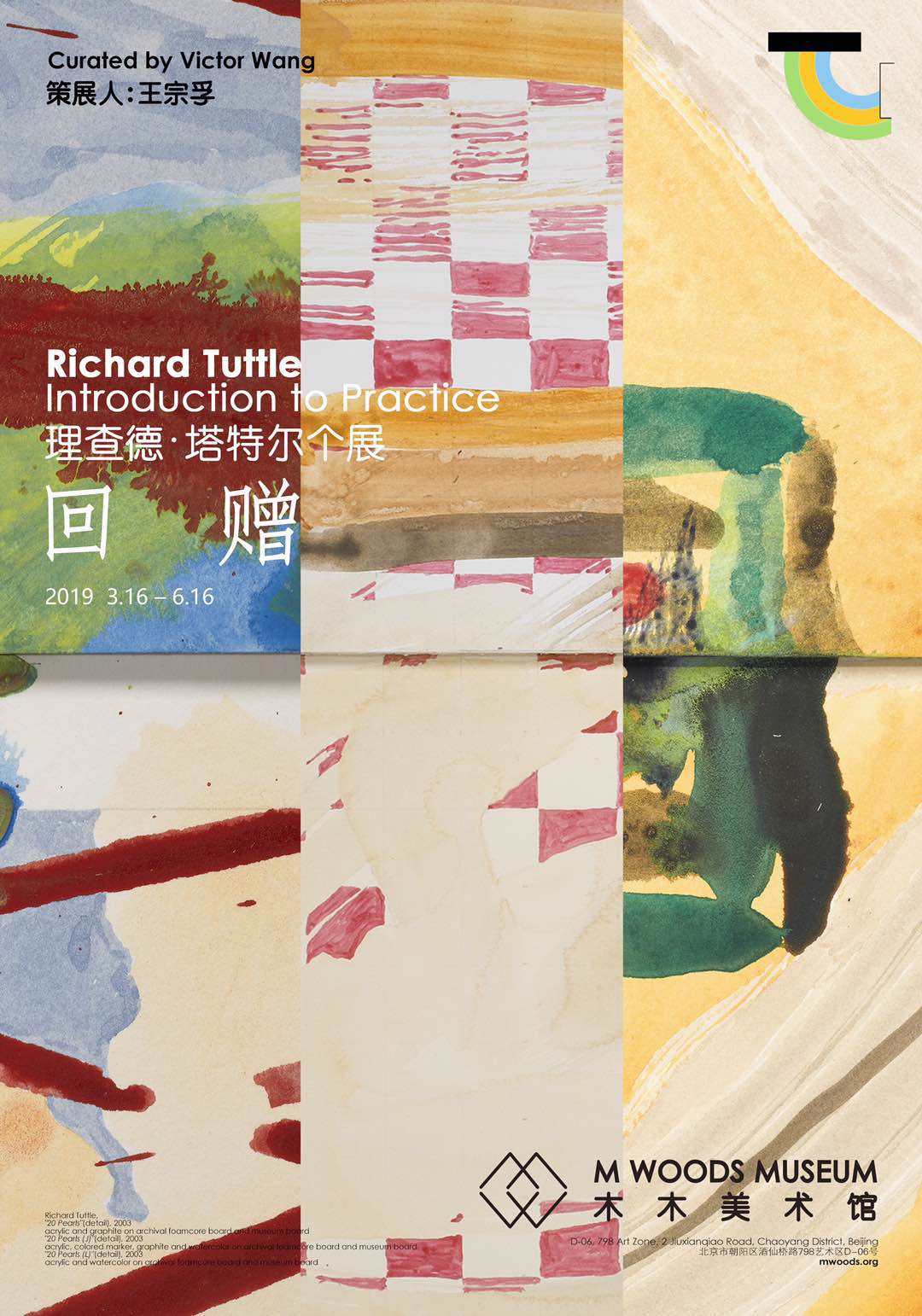
Richard Tuttle: Introduction To Practice
Curated by Victor Wang
M WOODS Museum
March 16, 2019 - Jun 2, 2019
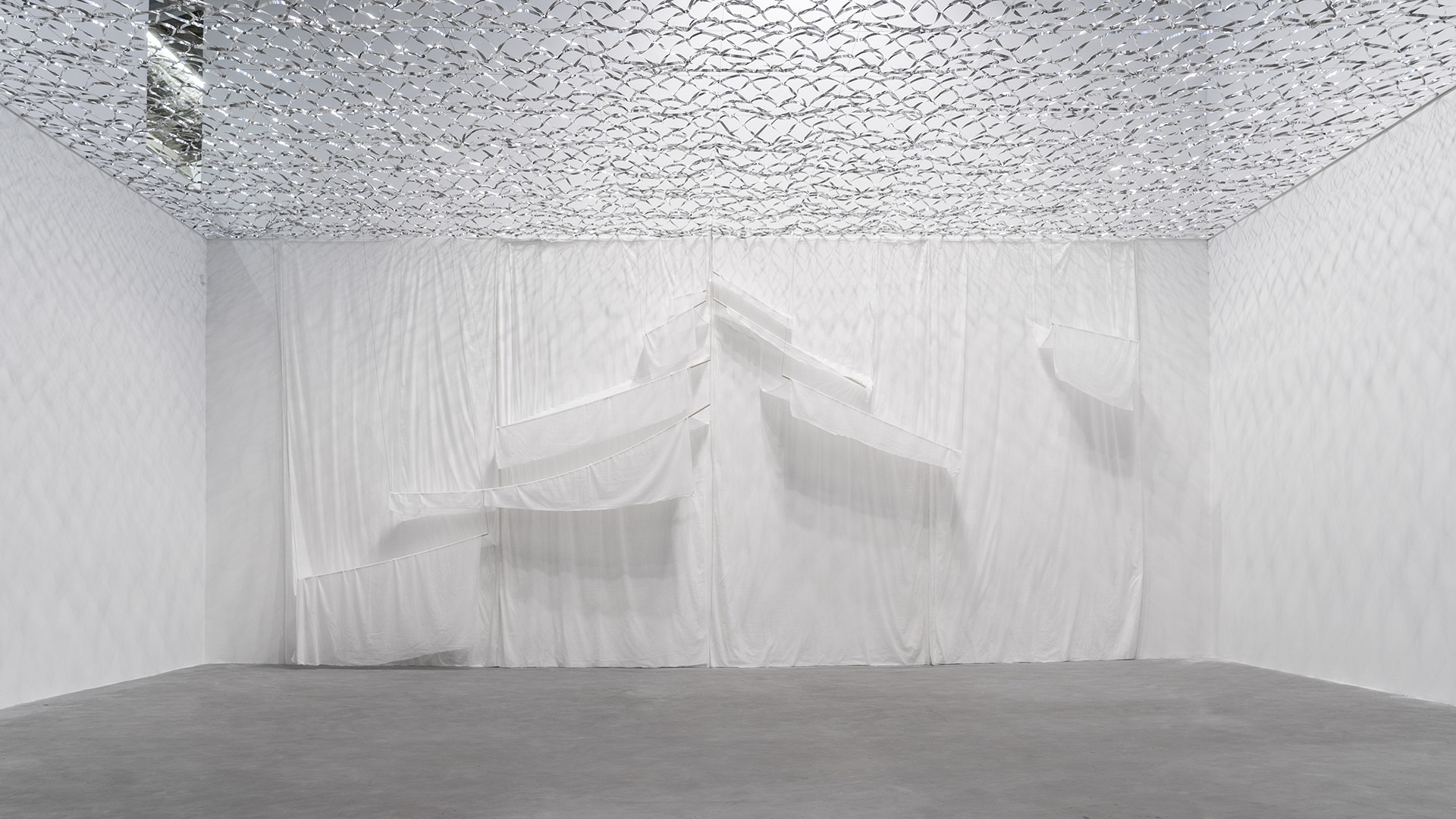 ‘A
Treatise on Stars’, (2019), Installation view, ‘Richard Tuttle:
Introduction To Practice‘ at M WOODS Museum, Beijing, 2019
‘A
Treatise on Stars’, (2019), Installation view, ‘Richard Tuttle:
Introduction To Practice‘ at M WOODS Museum, Beijing, 2019 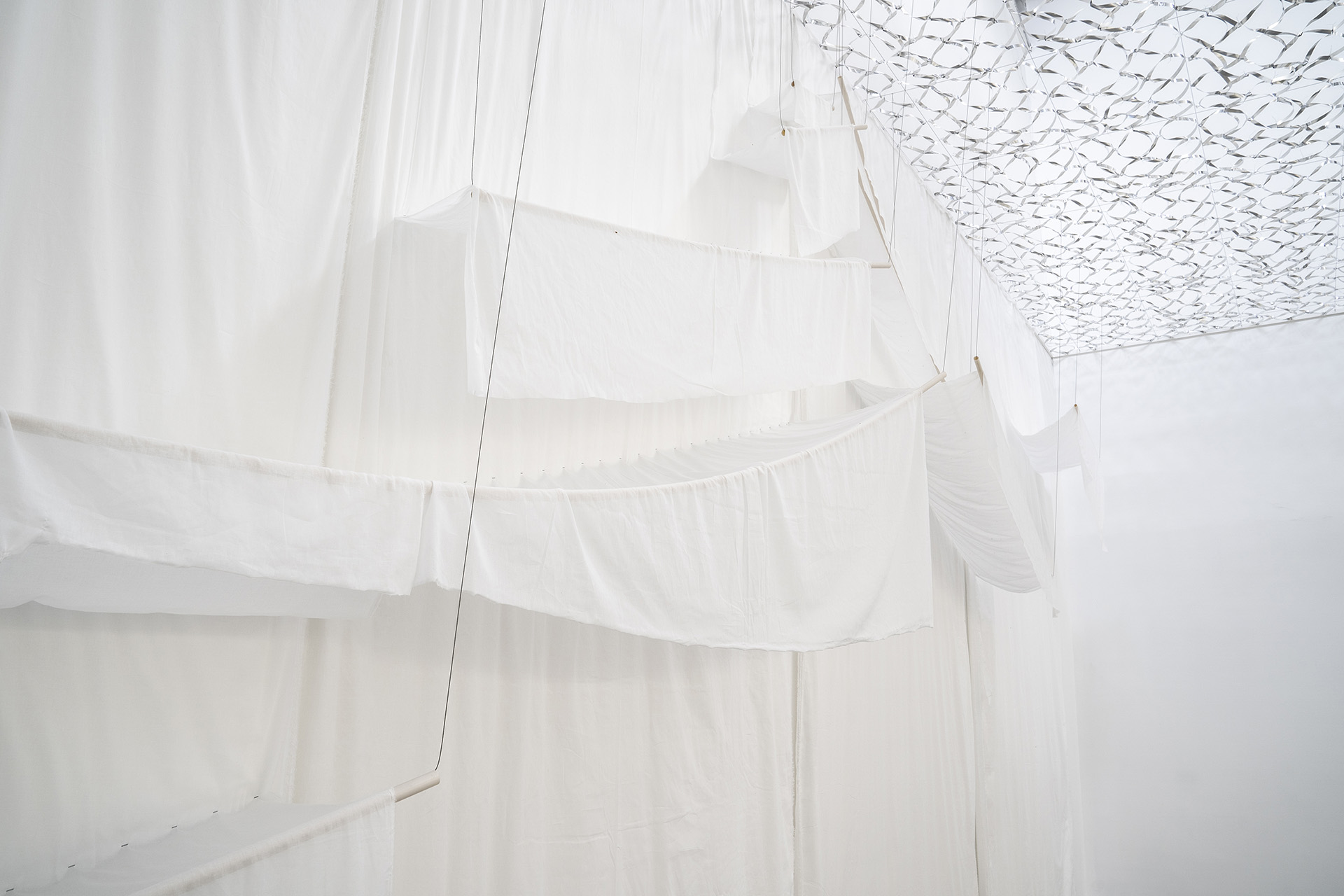
[Detail] ‘A Treatise on Stars’ (2019)
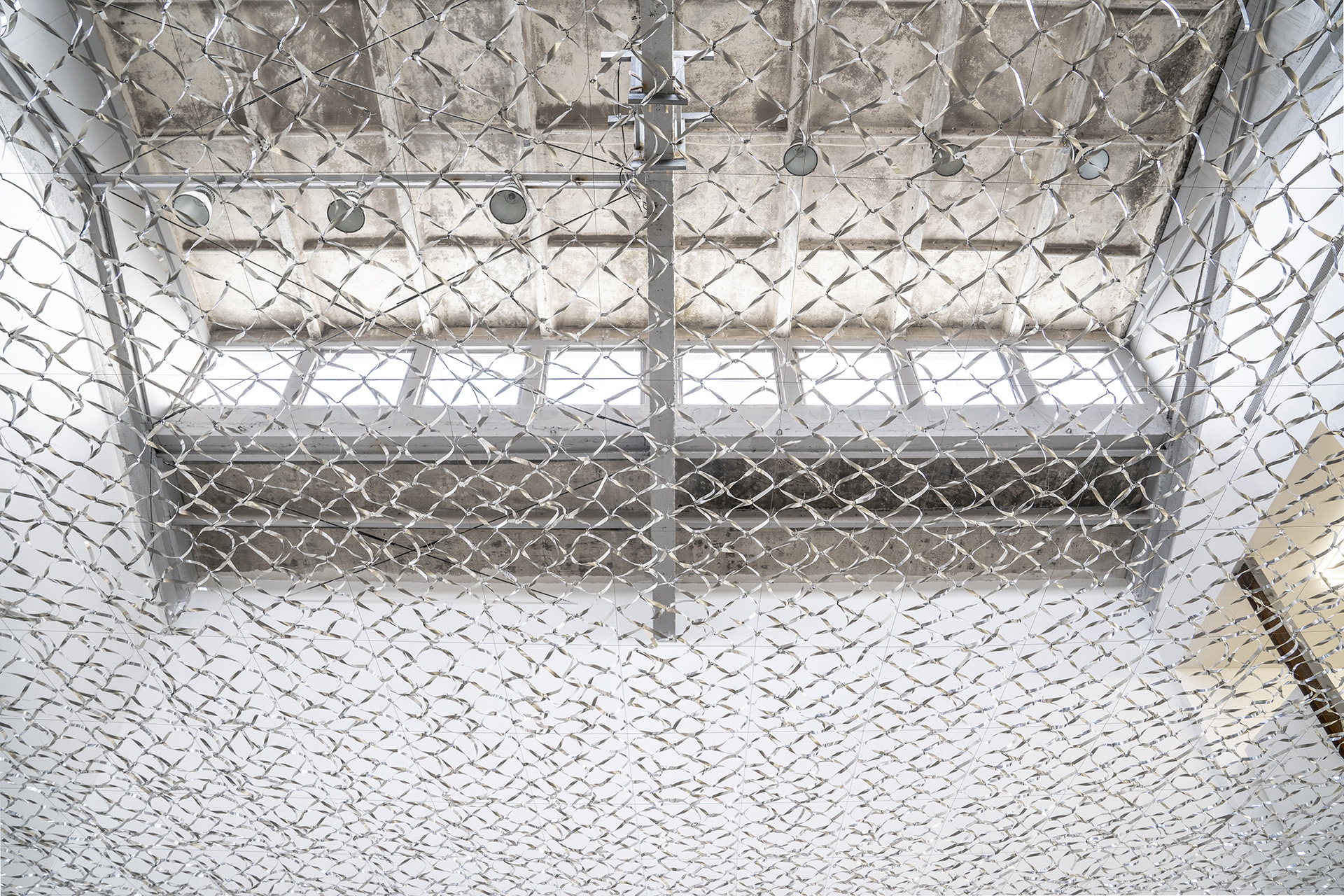
[Detail] ‘A Treatise on Stars’ (2019),installation view, ‘Richard Tuttle: Introduction To Practice‘ M WOODS Museum, Beijing, 2019
The exhibition entitled, "Richard Tuttle: Introduction To Practice," represents the first museum survey in China of the acclaimed artist and poet, Richard Tuttle. The exhibition will be held in Beijing, and is curated by Victor Wang 王宗孚.
The significance of Beijing to the artist is succinctly conveyed through the poem he composed during his residence there: “Still the capital allows for hiding in plain sight”.
The exhibition was developed as a path, a specific journey into the visual and ‘un-visual’ language that constitutes the artist’s practice. This five-decade survey of one hundred works, organised in close collaboration with the artist, focuses on his pursuit of art for life, and an art form that is both from, and not from, a lineage; a language and practice of making art that is about reality and concerned with strengthening the spirit.

Installation view, ‘Richard Tuttle: Introduction To Practice‘, M WOODS Museum, Beijing, 2019

[Detail] Richard Tuttle,’Ground Works’, (2017-2019), ‘Richard Tuttle: Introduction To Practice‘, M WOODS Museum, Beijing
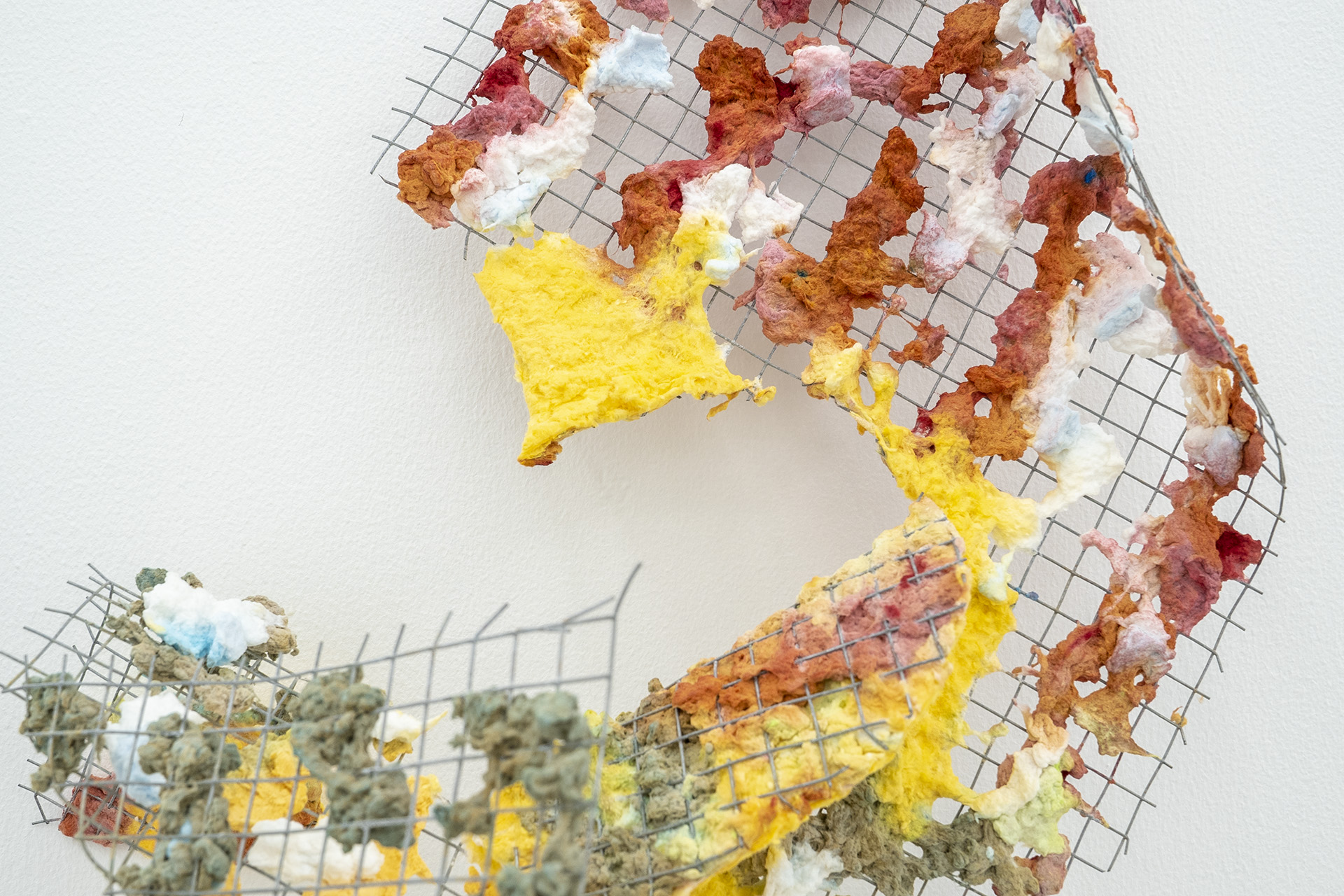
[Detail] Richard Tuttle,
‘
Place, nineteen’, (2013), ‘Richard Tuttle:
Introduction To Practice‘, M WOODS Museum, Beijing

Installation view, ‘Richard Tuttle: Introduction To Practice‘, M WOODS Museum, Beijing, 2019
Since the mid-1960s, the work of Richard Tuttle has transcended traditional artistic categorization, encompassing sculpture, painting, drawing, and poetry, while resisting classification within art-historical movements such as minimalism or abstraction. Tuttle approaches his art with an open-minded perspective, transcending the distinctions between high and low materials, and finding beauty in fragility and the dynamic relationships between scale and environment. Throughout his career, Tuttle has consistently produced work that is contemporary and innovative, pushing the boundaries of his practice. In 1972, during an exhibition of his Wire Pieces at the Betty Parsons Gallery in New York, a visitor approached the dealer and inquired as to whether Tuttle's work could be described as "minimalist." Parsons succinctly replied, "to hell with -isms, Richard Tuttle is a great artist. He’s in love with the new."[1] In 1975, Tuttle's first major survey exhibition was held at the Whitney Museum in New York, where he expanded the boundaries of art through his use of scale, method, and material, continuing his exploration of the visible and invisible world. The exhibition, one of the Whitney's most thought-provoking and controversial shows, acquired a somewhat legendary reputation.[2]

Richard Tuttle,‘Boys, Let's Be Bad Boys’ (1), (1998), and ‘Painted Boxes 28’, (1999),Installation view, ‘Richard Tuttle: Introduction To Practice‘, M WOODS Museum, Beijing, 2019


Installation view, ‘Richard Tuttle: Introduction To Practice‘, M WOODS Museum, Beijing, 2019
The oeuvre of Richard Tuttle demonstrates a consistent exploration of the relationship between art, scale, and environment. One notable example of this is his Third Rope Piece (1974), in which a mere length of cotton washing-line measuring 1/2 x 3 x 3/8 inches is attached to the wall by means of three nails. Upon its initial exhibition in the 1970s, this work generated significant critical attention and public interest for its boldness and conceptual rigor. Another prominent example is his 2014 commission for the Turbine Hall at Tate Modern, entitled I Don't Know: the Weave of Textile Language. This work, measuring 24 meters in length and 12 meters in height, further illustrates Tuttle's ability to deftly integrate scale and environment in order to emphasize the powerful interplay between art as both 'place' and as context.
The MWOODS exhibition features Tuttle's seminal piece, Letters (The Twenty-Six Series), 1967, which was previously displayed in the 1975 Whitney Museum survey. This work represents a significant shift in Tuttle's artistic practice as well as American conceptualism. The artist has given the gallery staff the discretion to install the work in any manner they deem appropriate, thereby enabling the work to evolve continuously through installation changes. This approach offers both the institution and the audience the opportunity to participate in the production and reception of the work.

[Detail] ‘A Treatise on Stars’ (2019),installation view, ‘Richard Tuttle: Introduction To Practice‘ M WOODS Museum, Beijing, 2019

Installation view, ‘Richard Tuttle: Introduction To Practice‘, M WOODS Museum, Beijing, 2019
Also included are his Paper Octagonals, which when first exhibited in the 1970s, pushed the boundaries of minimalism and site-specific art. First made in cloth, then in paper, and finally in wire, this reduction of object quality to geometric form developed over a five-year period shows Tuttle’s continued interest to break from the rectangular field of art and the environment in which it is shown. The shape of the works is based on a square set on its side and cut off at its corners.[4] Each paper octagonal is further embedded into a space when pasted directly onto the wall, allowing the architecture and work to be bound together, as the wall’s surface shows through the thin, almost translucent, paper works. Becoming an early example of the intersections of art and architecture.
Another important early series, Wire Pieces, was made in situ in the museum, and this is unique with every installation. Tuttle describes the works as ‘capturing the types of experience that cannot be repeated’. Likewise, no wire piece in the series is the same. Keeping within the artist’s scale, and informed by his hand, Tuttle unspools a long filament of metal wire, nailing one end to the wall and then methodically following the wire’s contours with a pencilled line on the wall, creating an almost illusionary depth and connection between both lines. Likewise, in his Line Pieces (1990) the pre-existing artwork is accompanied by a site-specific pencilled line drawn on the wall by the artist, further integrating the artwork into the environment and the place.

Installation view, ‘ Prehistoric Writing, 5.’, 2016, ‘Richard Tuttle: Introduction To Practice‘, M WOODS Museum, Beijing, 2019

Richard Tuttle,‘Walking on Air’, C12, 2009, Installation view, ‘Richard Tuttle: Introduction To Practice‘, M WOODS Museum, Beijing, 2019

Installation view, ‘Richard Tuttle: Introduction To Practice‘, M WOODS Museum, Beijing, 2019

Installation view, ‘Richard Tuttle: Introduction To Practice‘, M WOODS Museum, Beijing, 2019


Installation view, ‘Richard Tuttle: Introduction To Practice‘, M WOODS Museum, Beijing, 2019
The central hall of the museum will showcase a significant site-specific installation, entitled "A Treatise on Stars" (2019). This artwork features a five-meter high aluminum mesh ceiling, as well as an eight-layered fabric and PVC pipe wall sculpture. The installation is designed to confront the viewer with the pressing themes of opaqueness and transparency. Additionally, the hall will feature a series of new hand-painted floor tiles, entitled "Ground Works" (2019), which are inspired by Hispanic traditions and have been adapted to incorporate both modern and ancient local idioms. Together, these elements will provide an immersive art experience for the viewer, beginning from the ground.
The exhibition will be accompanied by a specially designed book created by the artist. The publication, which is unique in its composition, comprises of ten smaller printed books enclosed within a larger book. This distinctive format is consistent with the artist's previous publications, which often blend elements of artwork and printed matter. The exhibition serves as a survey of the artist's career and demonstrates his commitment to using art as a tool for benefit of life. The non-chronological cluster system used in the exhibition allows for a deeper understanding of the artist's language and perspective, as the artist himself describes it as, "a way to bring us closer to understanding what art is."

Richard Tuttle,’Looking For The Map 11’ (2014), Installation view, ‘Richard Tuttle: Introduction To Practice‘, M WOODS Museum, Beijing, 2019

Installation view, ‘Richard Tuttle: Introduction To Practice‘, M WOODS Museum, Beijing, 2019
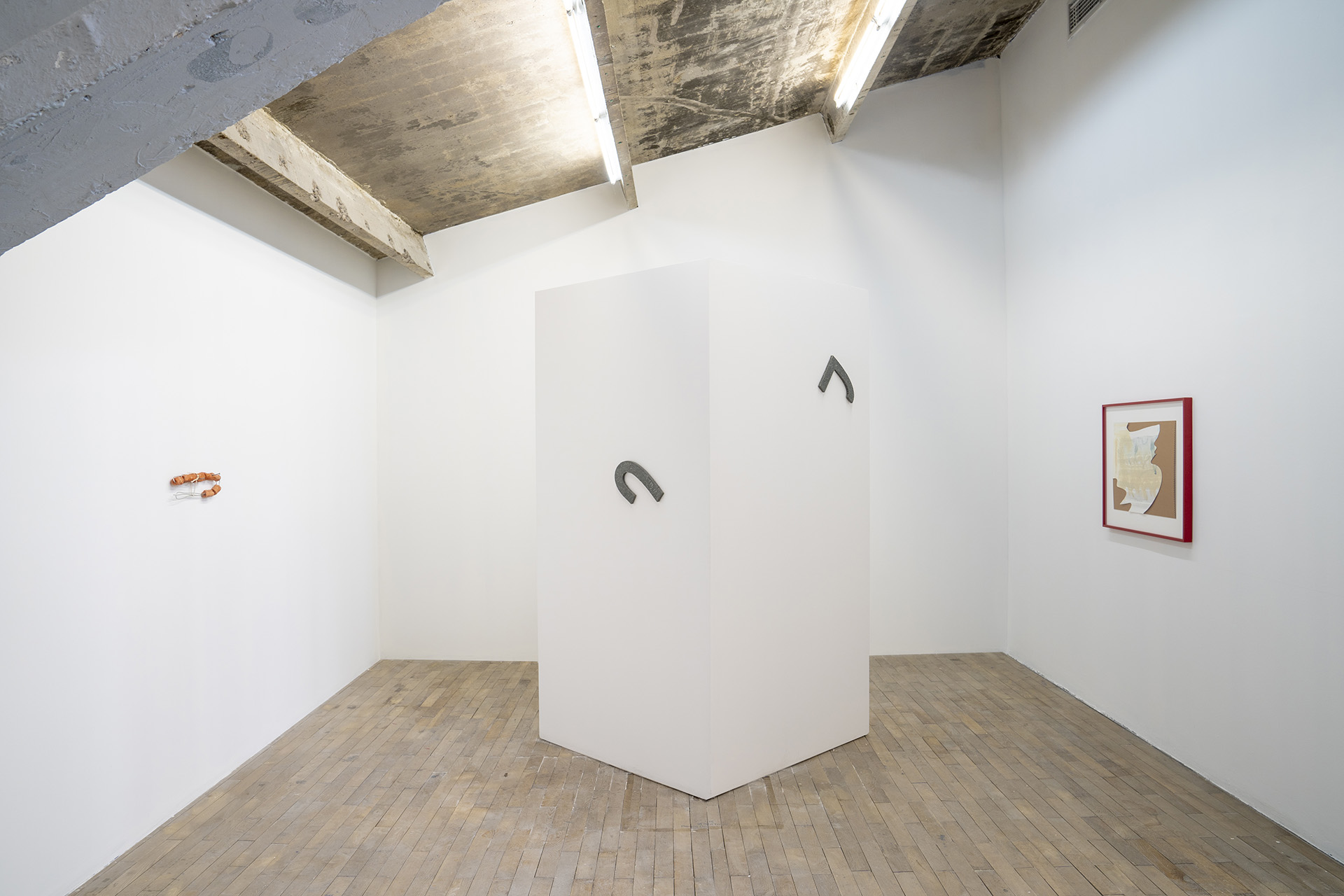
Richard Tuttle,‘Something Special; I asked for an explosion’, (2018), ‘Letters’ (from The Twenty-Six Series), (1967) and ‘Aspect XI’, (2015), Installation view, ‘Richard Tuttle: Introduction To Practice‘, M WOODS Museum, Beijing, 2019
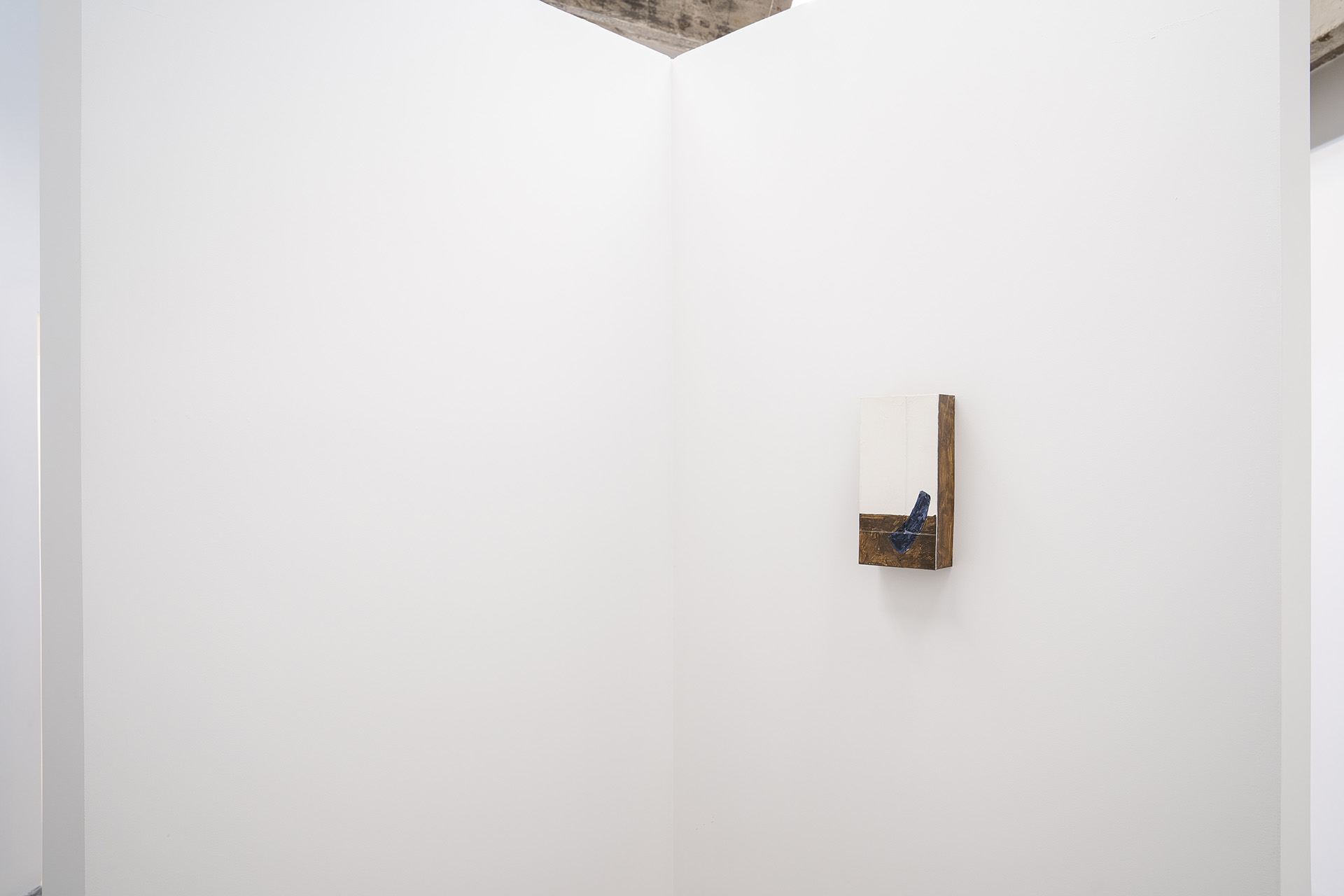
Richard Tuttle, ‘Painted Box 19’ (1999), Installation view, ‘Richard Tuttle: Introduction To Practice‘, M WOODS Museum, Beijing, 2019
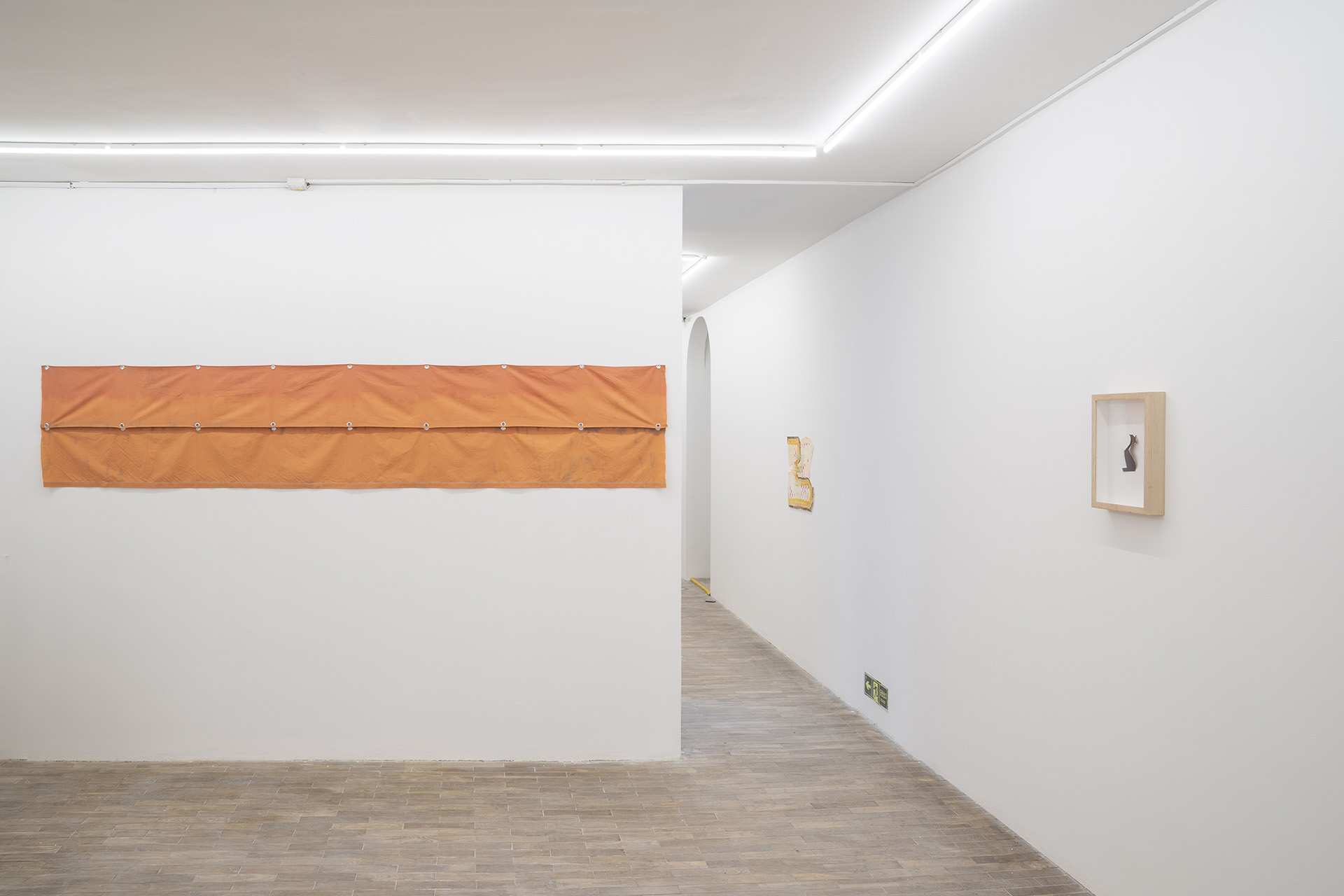
Installation view, ‘Richard Tuttle: Introduction To Practice‘, M WOODS Museum, Beijing, 2019
 Richard Tuttle, ‘3rd Wire Piece’ (1972), Installation view ‘Richard Tuttle:
Introduction To Practice‘ at M WOODS Museum, Beijing, 2019
Richard Tuttle, ‘3rd Wire Piece’ (1972), Installation view ‘Richard Tuttle:
Introduction To Practice‘ at M WOODS Museum, Beijing, 2019 
Richard Tuttle, (detail) ‘3rd Wire Piece’ (1972), Installation view ‘Richard Tuttle: Introduction To Practice‘ at M WOODS Museum, Beijing, 2019

Installation view ‘Richard Tuttle: Introduction To Practice‘ at M WOODS Museum, Beijing, 2019

Richard Tuttle, ‘Section VII, Extension K’, 2007, Installation view ‘Richard Tuttle: Introduction To Practice‘ at M WOODS Museum, Beijing, 2019

Installation view, ‘Richard Tuttle: Introduction To Practice‘, M WOODS Museum, Beijing, 2019
 Richard Tuttle, ‘6th Rope Piece’ (1974),
Installation view ‘Richard Tuttle:
Introduction To Practice‘ at M WOODS Museum, Beijing, 2019
Richard Tuttle, ‘6th Rope Piece’ (1974),
Installation view ‘Richard Tuttle:
Introduction To Practice‘ at M WOODS Museum, Beijing, 2019 
Installation view, ‘Richard Tuttle: Introduction To Practice‘, M WOODS Museum, Beijing, 2019

Installation view, Paper Octagonal, (1970), ‘Richard Tuttle: Introduction To Practice‘, M WOODS Museum, Beijing, 2019

Installation view ‘Richard Tuttle: Introduction To Practice‘ at M WOODS Museum, Beijing, 2019

Installation view, ‘Richard Tuttle: Introduction To Practice‘, M WOODS Museum, Beijing, 2019

Installation view, ‘Richard Tuttle: Introduction To Practice‘, M WOODS Museum, Beijing, 2019

Installation view, ‘Richard Tuttle: Introduction To Practice‘, M WOODS Museum, Beijing, 2019
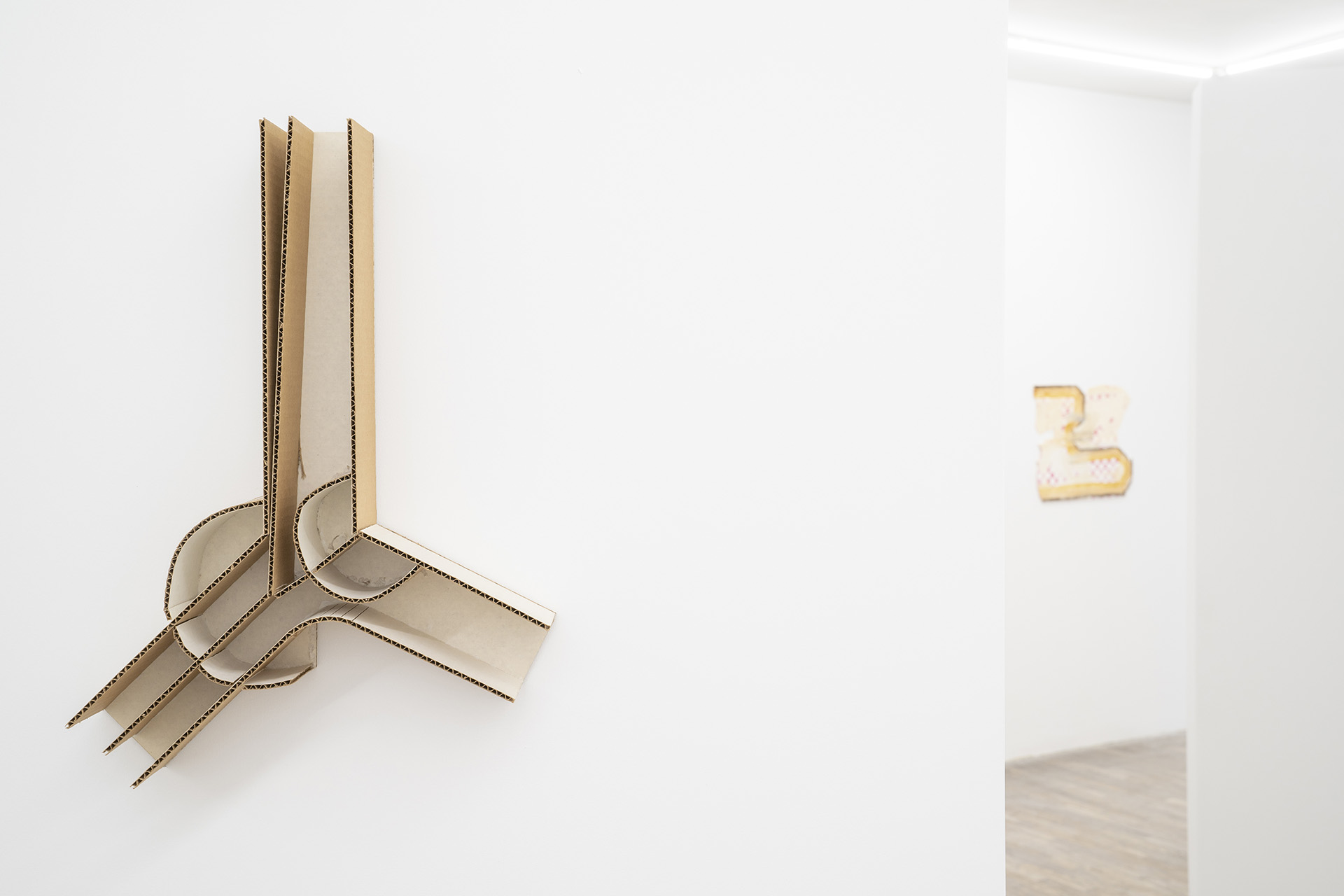
Richard Tuttle, ‘Boys, Let's Be Bad Boys’ (9), 1998 Installation view ‘Richard Tuttle: Introduction To Practice‘ at M WOODS Museum, Beijing, 2019

Installation view ‘Richard Tuttle: Introduction To Practice‘ at M WOODS Museum, Beijing, 2019

Installation view, ‘Richard Tuttle:
Introduction To Practice‘, M WOODS Museum, Beijing, 2019

Installation view, ‘Richard Tuttle:
Introduction To Practice‘, M WOODS Museum, Beijing, 2019

‘New York, New Mexico’, 1998 Installation view ‘Richard Tuttle: Introduction To Practice‘ at M WOODS Museum, Beijing, 2019

Installation view ‘Richard Tuttle: Introduction To Practice‘ at M WOODS Museum, Beijing, 2019

[Detail] Ground Works (2017-2019)

Installation view ‘Richard Tuttle: Introduction To Practice‘ at M WOODS Museum, Beijing, 2019

[Detail] Richard Tuttle, ‘Ten Kinds of Memory and Memory Itself’ (1973)

Installation view ‘Richard Tuttle: Introduction To Practice‘ at M WOODS Museum, Beijing, 2019
About the Artist
Richard Tuttle (b. 1941, New Jersey) lives and works between Maine, New Mexico and New York. His works are in major private and public collections around the world, and his recent retrospectives have been held at the San Francisco Museum of Modern Art; the Whitney Museum of American Art, New York; the Museum of Contemporary Art, Chicago; Los Angeles Museum of Contemporary Art; and Whitechapel Gallery, London. His other achievements include a major commission at Tate Modern’s Turbine Hall, invitations to the Venice Biennale (1976, 1997, 2001), Documenta (1972, 1977 and 1987) and the Whitney Biennial (1977, 1987, 2000).
Engaged with sculpture, painting, drawing and poetry, Tuttle resists art historical classifications, such as Minimalism or Abstraction. His aesthetic forms carry a remarkable sensitivity towards everyday materials, sparking much critical debate since the 1960s. Ephemeral yet timeless, their attention to scale and environment continue to inspire to this day. Unfolding across the entirety of the museum, Introduction of Practice offers Chinese audiences a rare opportunity to engage directly with Tuttle’s diverse oeuvre.
[1] Neal Benezra , Director’s Foreword, The Art of Richard Tuttle, ed. by Madeleine Grynsztejn (San Francisco, CA: San Francisco Museum of Modern Art, 2005), pp 7
[2] Arthur Lubow, ‘The Curse of the Whitney’,New York Times, April 11, 1999, accessed Dec 08, https://www.nytimes.com/1999/04/11/magazine/the-curse-of-the-whitney.html
[3] Madeleine Grynsztejn ‘A Universe of Small Truths’, in: The Art of Richard Tuttle, p. 30
[4] Grynsztejn, p.33
[Chinese Version]
理查德·塔特尔
回赠
由王宗孚策划
2019年3月16日至6月16日
木木美术馆
木木美术馆很荣幸于2019年春季呈现“理查德·塔特尔:回赠”。这是著名艺术家、诗人理查德·塔特尔在中国的首个展览,由特邀策展人王宗孚策划。
一切皆在沉默之下[1]
北京对艺术家的重要性可以用他在这里驻留期间写下的一句诗概括:“这座首都依旧隐藏在清晰的视野之外”。
以此次展览为路径,观者得以踏上一场特殊的旅程,并在此领略构建了塔特尔创作实践的视觉与非视觉语言。此次由艺术家本人密切参与策划的展览以一百件作品概括了塔特尔长达五十年的创作生涯,聚焦于他“为生活而艺术”的追求、源自西方艺术谱系传统和自身经验的表达风格和在关注现实的同时强调精神性的艺术语言与实践。
展览中的每个展厅分别对应了塔特尔不同时期、不同方向的探索和经历,在此,艺术家和策展人创造了一个“荚”系统作为此一百件作品的梳理线索:展览共设33个“荚”,每个“荚”内包含相互关联的三件作品。除过往创作外,观众还将看到一件为本次展览专门创作的大型装置、在北京驻留期间完成的诸多新作和一套包括了十本书的特别出版物。此外,艺术家绘制了一个特殊的符号,以此作为空间设计的概念蓝本。穿行于一个个“荚”所营造的小径之中,对观者来说,展览如同一件完整的作品。
自上世纪60年代中期塔特尔的创作生涯伊始之时,他的作品便打破了雕塑、架上绘画、纸本画作和诗歌等不同媒介的传统定义,他同时也拒绝如极简主义或抽象风格这类艺术史的分类方法。以一种开明的视野与心胸,塔特尔摈除了材料之间高低品质的美学分野,他在脆弱性中发掘张力,也在作品规模与其呈现环境之间的变化关系中找到潜能。自始至今,塔特尔持续地创作具有当代性的作品,同时不断超越此前的范式。1972年,当他的作品《金属线》在纽约贝蒂·帕森斯画廊展出时,一位观众向画廊主帕森斯问道,这件作品是否可以被认为属于极简主义。她不悦地答道:“让这些主义滚蛋吧!理查德·塔特尔是一位伟大的艺术家,他乐于创新。”[2] 1975年,他的首个大型研究性个展在纽约惠特尼美术馆举办,艺术家再次在作品规模、创作方法和材料等方面拓展了艺术的定义,他本人在视觉或非视觉的艺术世界的研究探索也更进一步。这也是惠特尼美术馆有史以来最具挑衅性和争议性的展览之一,今天它已然具有了某种传奇色彩。[3]
1974年,塔特尔创作了《第三条绳索》,这件作品第一次展出时便以大胆和果决在艺评界与观者中引起了轰动,而它仅由一根极短的棉质晾衣绳(1.27 × 7.26 × 0.95厘米)和将其悬挂在墙上的三枚钉子组成。从这件作品到泰特美术馆涡轮大厅委托创作的长达24米、高达12米的大型装置《我不知道,纤维之语的交织》(2014),塔特尔善于利用作品的规模并将这一元素编织进展览环境,强调了作为场域的艺术和作为语境的艺术之间强大的相互联系。
本次木木美术馆的展览中亦有一件曾于1975年在惠特尼美术馆展出的作品——《字母》(“26个”系列,1967)。无论对艺术家的创作历程还是对美国极简主义艺术来说,这件作品都标志着一个重要的转折。根据艺术家的意愿,这件作品的展示形态将由美术馆工作人员决定,由此,作品得以在展期内不断变化,[4]艺术机构和观众也因此被赋予了参与制作和呈现这件作品的机会。
木木美术馆还将展出塔特尔另一件广为人知的作品《纸八边形》,这件作品最早曾在上世纪70年代展出,它拓宽了极简主义和特定场域艺术的边界。“八边形”这一系列作品最初所使用的材料是布,之后是纸,最后艺术家还使用了金属线。这种不断将物体本态简化至几何形的创作持续了五年之久,展现了艺术家对打破艺术及其呈现环境的条条框框的不断关注与投入。
这一系列作品的形态是对正方形的四角进行切割所得到的。[5]当作品被直接固定于展墙之时,墙面在轻薄的纸后若隐若现,展览空间得以与作品融为一体,这也成为了有关艺术与建筑如何交汇之尝试的早期案例。
《金属线》也艺术家的先期代表作之一。这是一系列根据美术馆内特定空间创作、每次呈现均不相同的作品。塔特尔形容其为“抓住了某种无法被重复的经验”。这件作品通常保持在塔特尔作品的惯常体量:艺术家将一根金属线的一端固定在墙面,然后沿着其轮廓在墙上画下一条相仿的线条。由此,艺术家在两条线之间构建起微妙的关联,创造了一种近乎虚幻的深度。更早前创作的一系列作品《线》(1990)采用了与此类似的方式用铅笔在展墙上描绘线条,进而使作品与背景环境不分彼此。
在美术馆主展厅,塔特尔创作了一件与整个建筑空间展开对话的大型特定场域装置。另一组由艺术家专门为此次展览创作的手绘瓷砖将分布于不同展厅中。
此外,艺术家还为本次展览设计了一套自成一体的出版物,包括一本大书和嵌入其中的十本小书。正如艺术家先前所设计制作的那些出版物一样,这套书亦介于艺术作品与书籍之间。可以说,展览及出版物作为尺度、材料、色彩和视觉构建方法在不同文化和社会环境中所自然形成的结果,以非时间顺序的“荚”系统为观者提供了一种特别的研究路径。而以十本书为框架的书籍则游走于有关作品、展览和文本的历史之间,为观者提供了一种全新视角以更好地理解了作品的本质及影响。
关于艺术家
理查德·塔特尔于1941年生于美国新泽西,现工作和生活于缅因、新墨西哥和纽约。他的作品多被纳入全世界最重要的私人和公共收藏之中。其近期回顾展陆续在旧金山现代艺术美术馆、惠特尼美国艺术美术馆、芝加哥当代艺术美术馆、洛杉矶当代艺术美术馆和伦敦白教堂艺术中心展出。他的其他成就包括泰特现代美术馆涡轮大厅的大型委托创作、威尼斯双年展(1976、1997、2001)、卡塞尔文献展(1972、1977、1987)和参展惠特尼双年展(1977、1987、2000)的参展经历等。
关于策展人
王宗孚是一位独立策展人和展览制作人,现居住和工作在上海、伦敦两地。他是纽约Performa的副策展人,同时也曾担任近期出版的《1960-1990东亚表演史》(DRAF2018)的编辑。近年来,王宗孚策划了在以下美术馆及艺术廊的展览:柏林国立博物馆(2019待展)、上海香格纳画廊(2018)、伦敦白教堂美术馆(2018)、伦敦赛迪HQ画廊(2017)、上海Cc基金会&艺术中心(2017)、上海当代艺术馆艺术亭台(2016)、上海chi K11美术馆(2016)、以及伦敦当代艺术学院(2014)。另外,王宗孚也曾参与策划第十二届哈瓦那双年展(2015)以及第九届上海双年展温哥华馆(2012)。王宗孚在多个大学讲授过当代中国艺术相关课程,如东京艺术大学,考陶尔德艺术学院以及伦敦中央圣马丁学院。他也曾在伦敦皇家艺术学院担任客座讲师。
关于 M WOODS 木木美术馆
M WOODS木木美术馆坐落于北京798艺术区,是由收藏家林瀚、雷宛萤(晚晚)和黄勖夫于2014年共同创办的民营非营利美术馆。作为中国本土面向公众的新型全球性艺术平台,M WOODS将定期举办展览,并推出公共活动、艺术出版物以及艺术家驻留计划等项目。美术馆艺术项目主要依托美术馆馆藏,从中国古画石刻到现当代影像装置,以不限于特定时代、地域或媒介的收藏,致力于探寻艺术的普适性、纯粹性及恒久性,从而探索当下美术馆的职责。2015年,M WOODS被官方认证为非盈利的民营美术馆。我们将持续的推出展览与公共教育项目,推动艺术在中国民众中的传播
[1] 原文“Everything Is Below Silence.”为艺术家理查德·塔特尔诗作。本文由策展人王宗孚撰写。
[2] Neal Benezra , Director’s Foreword, The Art of Richard Tuttle, ed. by Madeleine Grynsztejn (San Francisco, CA: San Francisco Museum of Modern Art, 2005), pp 7
[3] Arthur Lubow, ‘The Curse of the Whitney’, New York Times, April 11, 1999, accessed Dec 08, https://www.nytimes.com/1999/04/11/magazine/the-curse-of-the-whitney.html
[4] Madeleine Grynsztejn ‘A Universe of Small Truths’, in: The Art of Richard Tuttle, p. 30
[5] Grynsztejn, p.33
VICTOR WANG
All content property of © Victor Wang 2009 - 2024 All rights reserved -- BEIJING - LONDON.
All content property of © Victor Wang 2009 - 2024 All rights reserved -- BEIJING - LONDON.